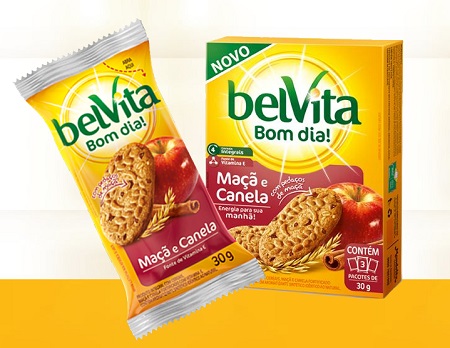Mondelēz International, a snacking powerhouse consisting of brands such as Oreo, Nabisco and Cadbury, wanted to measure the marketing effectiveness of two new product launches in Brazil: belVita and Trident Unlimited. To do so, it embraced Google's Brand Lift solution, which revealed valuable insights into the campaigns' viewer retention rates, target audiences and frequency caps. Based on the findings, Mondelez adjusted its targeting and its creative to reach a 15% view-through rate.

Case study summary
• FMCG giant looks to improve marketing effectiveness and campaign efficiency with insights into the brands and target audiences
• Measured campaign effectiveness with Brand Lift and near real-time insights and optimised the campaigns in real time
• The campaign resulted in a significant lift in brand awareness across two products when compared to a control group
The challenge
Mondelēz International is a global snacking powerhouse, offering familiar brands such as Oreo, Nabisco and Cadbury in 165 countries. Mondelēz turned to Google's Brand Lift solution to measure the brand awareness generated by two video campaigns in Brazil.
In May 2014, Mondelēz decided to use YouTube TrueView ads to promote the launch of its apple-and-cinnamon belVita breakfast biscuit. The TrueView ad format lets people watch the ads they find interesting and skip those they don't. Mondelēz wanted to increase awareness, strengthen the focus on breakfast and encourage consumers to try the new product.
The solution
Mondelēz used Google's Brand Lift solution to measure the effectiveness of the ad. Brand Lift measures the effectiveness of video and display campaigns by using survey and search data collected from target audiences. You can optimize campaigns for better results midflight, based on results broken out by demographics, frequency and more.
"We wanted to understand if we were using the best strategy and best material for the channel," says Rafaela Coelho, digital media manager for w3haus, one of Mondelēz's digital agencies.
When Brand Lift findings showed that viewer retention dropped considerably after the first five seconds, Mondelēz paused the campaign and tested another version. The revised ad mentioned the brand within the first five seconds, showed the product on screen and included a call to viewers not to skip the ad. Revising those first few critical seconds improved the view-through rate (VTR) to about 15%. Overall, the ad showed a 57% lift in ad recall and a 26% lift in brand awareness when compared with a control group.
The studies offered other insights that let Mondelēz adjust its campaign and make it more effective. The company narrowed the campaign's target audience to the 35–44 age group, which had a 79% brand recall. In addition, Mondelēz raised the frequency cap—how often a viewer sees a video over a given time—to three per week after noticing that a higher frequency led to higher recall.
"Brand Lift helped us to identify the best way to reach our target," Coelho says. "With suggested optimizations, we were able to identify an improvement in the results throughout the study. That helped us to build a better strategy."
Mondelēz also used the Brand Lift solution to measure the effectiveness of the Trident Unlimited product launch. Digital agency Espalhe MSLGroup created a 30-second YouTube video with popular Brazilian actor Cauã Reymond. The team produced two versions—one with Reymond putting gum into his mouth at the beginning, and the other showing him already chewing the gum—wanting to use only the more effective one. "Brand Lift was an excellent way of answering questions and finding insights," says Daniel Silber, Trident brand manager for Mondelēz.
The results
Bel Vita
• 26% lift in brand awareness vs. control group
• 57% lift in ad recall vs. control group
• 15% view-through rate
Trident Unlimited
• 36% lift in brand awareness vs. control group
• 97% lift in ad recall vs. control group
Reacting to Brand Lift findings, Mondelēz adjusted the campaign and used only the better-performing video. The version that didn't show the gum had a 36% brand recall, 5% higher than the original version. Ad recall climbed to 97%, 23% higher than the other version—the one that showed the gum.
As with belVita, Brand Lift also provided a few great insights into the brand. Mondelēz learned that women were more interested than men in the Trident campaign. Brand Lift also showed that the most effective frequency cap was three impressions per week.
"Brand Lift delivered quickly," says Leonardo Carbonell, the agency's paid media director. "It was good to optimize the campaign while it was running. Other tools sometimes don't allow time to optimize ads during the campaign. We definitely are putting Brand Lift in the time frame for our next campaigns."
"Having Google as a strategic partner in developing this type of research generates credibility for digital strategy," says Natacha Volpini, digital media manager for Mondelēz. "It not only develops the Brazilian market but also reinforces consumer behavior and equips our marketers with data and powerful insights."